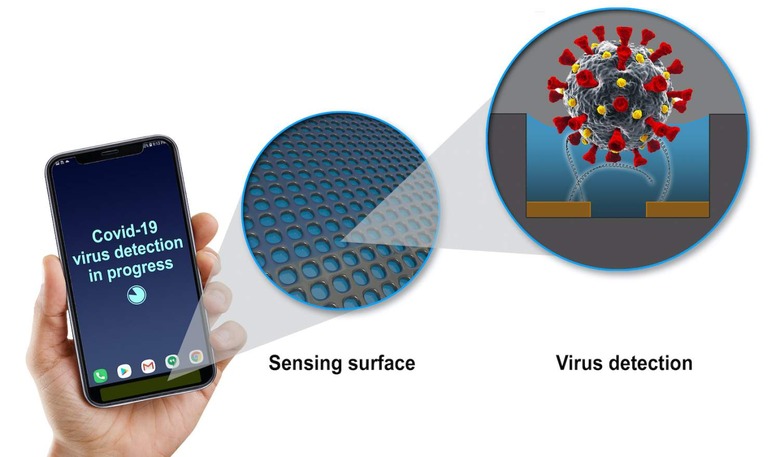COVID-19 Biosensors Could Make Your Phone A Virus-Spotter
GE is working on tiny sensors that could spot the COVID-19 virus, small enough to integrate into smartphones, wearables, and other surfaces as a digital watchdog for potential routes of infection. The electronic nano-sensors distill down what would traditionally demand large and complex lab equipment into something far smaller, focused on detecting a specific thing such as coronavirus.
Current diagnostics for COVID-19 rely primarily on biological testing of potentially-infected people, typically using nasal or throat swabs. However the virus can be identified in minute levels from nano-particles, GE points out, as long as you have the right equipment.
The sensor technology has been awarded a two year grant by the National Institutes of Health. "Available tools for detection of SARS-CoV-2 virus require extensive sample preparation and/or expensive lab-based equipment to obtain accurate results," the project explains. "The objective in this proposal is to build a touch-screen sensor array to directly capture, detect, and identify model SARS-CoV-2 virus particles with minimal false alarms."
The system will rely on new, multi-functional bioreceptors, effectively sensors that are developed to specifically spot a particular virus or other substance. These will be integrated into a touch surface that could be built into phones, security keypads, computer keyboards, or wearables.

"We have developed tiny sensors smaller than a fingertip that have the same detection capabilities as the high-end analytical instruments the size of a microwave oven," Radislav Potyrailo, a principal scientist at GE Research and principal investigator on the NIH project, explains. "We train them to detect a specific thing, and they are able to do that well without being thrown off the trail by something else."
Part of the challenge with COVID-19 has been understanding and controlling the spread of the infection, particularly when it comes to asymptomatic cases. Given some people can be infectious but show no outward signs of having coronavirus, managing how they potentially pass it on through community spread has been a key issue. That could only become more pressing as the immunized population grows, since while the impact on a vaccinated person of COVID-19 may be lower, that doesn't mean they can't pass the infection on to other people.
Building detection for the virus into the devices and surfaces we interact with every day could be a key part of controlling that spread. While smartphones and other connected devices are an obvious route to begin with, one of the appeals of biosensor technology is that low-cost sensors – designed to focus on identifying one or just a handful of viruses – could become far more ubiquitous. When you reach the point where sensor arrays could be fitted to door handles and other commonplace surfaces, it becomes far more straightforward to isolate potential vectors for COVID-19 spreading, particularly as new variants on the virus emerge.
Development of the GE sensors is still underway, though the team says it hopes to have developed a practical product by the end of the two year NIH project.
